Background
The defeat of Little Crow in the Dakota War of 1862 caused the widespread dispersion of the Santee Sioux or Eastern Dakota. Of the 6,300 Santee, 2,000 were taken prisoner. About 700 of the Lower Sioux from the Mdewakanton and Wahpekute bands remained at large. Most of the 4,000 Upper Sioux from the Sisseton and Wahpeton bands, who had been reluctant participants in the war, also remained free. A few of these refugees from the war fled to Canada, but more than 4,000 congregated in the summer of 1863 in a large encampment in present-day Kidder County, North Dakota. They were joined in the camp by an unknown, but probably sizeable, number of their Teton, Yankton, and Yanktonai relatives. [2]
Despite the defeat in the 1862 war, however, Santee raids continued in 1863, resulting in more than a dozen white deaths in Minnesota. To protect the frontier, Henry Hastings Sibley, appointed brigadier general of volunteers, was ordered by his superior, General John Pope, to lead a military expedition to punish the Santee. On June 16 Sibley departed from near Fort Ridgely and marched into the Dakota Territory. His army initially numbered 3,320 men, the largest military force ever assembled to combat the Indians. [3]
Sibley's ponderous column proceeded very slowly northwestward, hampered by drought, heat, and a lack of potable water. After a month of travel without having seen a single Indian, Sibley was informed by a group of buffalo hunters, mostly Métis Chippewa, of the location of a large Santee encampment of 600 lodges. With a stripped-down army of 2,056 men – 1,436 infantry, 520 cavalry, and 100 artillery plus 60 mixed blood and Sioux scouts – Sibley located the Santee encampment on July 24. [4] He halted nearby and sent scout and interpreter Joseph LaFramboise, one-half Sioux, to the Indian camp to propose a meeting with Upper Sioux leader Standing Buffalo. [5] Sibley believed, probably correctly, that Standing Buffalo and his followers favored peace with the whites. [6] However, Inkpaduta, believed to be implacably hostile to whites, and his band were also in the Indian camp. [7]
Battle
Anticipating a meeting between Sibley and Standing Buffalo, a group of Sioux and Sibley's scouts gathered peacefully on a hill, called Big Mound, 300 to 400 yards from Sibley's camp. An army surgeon, Dr. Josiah S. Weiser, approached Big Mound to greet several Indian friends, but was suddenly shot and killed by Tall Crown, a follower of Inkpaduta. The scouts and the Sioux opened fire on each other and the battle began. [8]
Sibley estimated that he faced 1,000 to 1,500 Indian warriors. They took cover behind hills and in ravines. Sibley sent forward two companies of Mounted Rangers to drive the Indians away from Big Mound and supported them with more soldiers and a six-pounder cannon. On reaching the top of Big Mound, Sibley could see the Indian warriors retreating, guarding the women and children of the Indian camp fleeing westward with their possessions. [9] The Santee were poorly armed. Only about one half had firearms and those had little ammunition. [10]
Several hundred of the Mounted Rangers pursued the Indian warriors, protecting the flight of their women and children, until nightfall. Most of Sibley's infantry devoted themselves to destroying the large quantities of jerky, buffalo robes, cooking utensils, and other goods left behind by the Sioux in their hasty flight. [11]
Sibley intended for the Rangers to continue the pursuit of the Sioux the next day, camping where they were for the night. However, by a mistaken order, the Rangers were ordered instead to return to their base, 12 miles from where they were. They arrived exhausted and Sibley was forced to rest his soldiers and horses the next day, July 25, before continuing his pursuit on July 26. Sibley's casualties for the day were three dead and four wounded. In Sibley's official report he estimated that 80 Indians had been killed and wounded, but his diary said that only 9 were killed. [12]

The Lakota are a Native American people. Also known as the Teton Sioux, they are one of the three prominent subcultures of the Sioux people, with the Eastern Dakota (Santee) and Western Dakota (Wičhíyena). Their current lands are in North and South Dakota. They speak Lakȟótiyapi—the Lakota language, the westernmost of three closely related languages that belong to the Siouan language family.

The Sioux or Oceti Sakowin are groups of Native American tribes and First Nations people from the Great Plains of North America. The Sioux have two major linguistic divisions: the Dakota and Lakota peoples. Collectively, they are the Očhéthi Šakówiŋ, or "Seven Council Fires". The term "Sioux", an exonym from a French transcription of the Ojibwe term Nadowessi, can refer to any ethnic group within the Great Sioux Nation or to any of the nation's many language dialects.

The Battle of Killdeer Mountain took place during Brig. Gen. Alfred Sully's expedition against the Sioux in Dakota Territory July 28–29, 1864. The location of the battleground is in modern Dunn County, North Dakota. With a total of more than 4,000 soldiers involved in the total operation, and more than 2,000 in the battle, Sully's expedition was the largest ever carried out by the U.S. army against Native Americans.

The Sioux Wars were a series of conflicts between the United States and various subgroups of the Sioux people which occurred in the later half of the 19th century. The earliest conflict came in 1854 when a fight broke out at Fort Laramie in Wyoming, when Sioux warriors killed 31 American soldiers in the Grattan Massacre, and the final came in 1890 during the Ghost Dance War.
Nakota is the endonym used by those Native peoples of North America who usually go by the name of Assiniboine, in the United States, and of Stoney, in Canada.

The Battle of Dead Buffalo Lake was a skirmish in July 1863 in Dakota Territory between United States army forces and Santee, Yankton, Yanktonai and Teton Sioux. The Sioux attempted to capture the pack train of the army and retired from the field when they were unsuccessful.

The Battle of Stony Lake was the third and last engagement of Henry Hastings Sibley's 1863 campaign against the Santee, Yankton, Yanktonai and Teton Sioux in Dakota Territory. Following the battle, the Indians fought delaying actions against Sibley until their women and children had successfully crossed the Missouri River. Sibley then gave up his chase of them.
The Mdewakanton or Mdewakantonwan are one of the sub-tribes of the Isanti (Santee) Dakota (Sioux). Their historic home is Mille Lacs Lake in central Minnesota. Together with the Wahpekute, they form the so-called Upper Council of the Dakota or Santee Sioux. Today their descendants are members of federally recognized tribes in Minnesota, South Dakota and Nebraska of the United States, and First Nations in Manitoba, Canada.
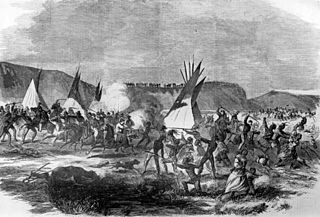
The Battle of Whitestone Hill was a battle of the Sioux Wars in 1863 in the Dakota Territory as punishment against the Sioux in the aftermath of the Dakota War of 1862. From September 3-5, 1863, Brigadier General Alfred Sully led U.S. Army troops against a village of Yanktonai, Santee, and Teton (Lakota) Sioux. The reported casualties vary, but U.S. Army troops killed somewhere between 150 and 300 Sioux and captured between 150 and 250 Sioux, including women and children, and they suffered approximately 22 killed and 38 wounded.
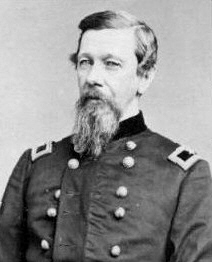
Alfred Sully was an American military officer who served in the United States Army during the Mexican-American War and the American Indian Wars. He served as Brevet Brigadier General in the Union army during the American Civil War but was removed from command by John Gibbon for failure to suppress a mutiny by the 34th New York Infantry Regiment. He was cleared by a court of inquiry of any wrongdoing and sent to command the District of Iowa in the Department of the Northwest during the Sioux Wars. After the Civil War, he served as major in the United States Army and continued to fight in the Indian Wars including the Nez Perce War and out of Fort Dodge, Fort Harker and Fort Vancouver. He served as Superintendent of Indian Affairs for Montana in 1869 and as colonel of the 21st Infantry Regiment in 1873.

The 1st Minnesota Cavalry Regiment, also known as the Mounted Rangers, was a Minnesota USV mounted infantry regiment that served in the Union Army during the American Civil War.

The 7th Minnesota Infantry Regiment was an infantry regiment in the Union Army that served in the Western Theater of the American Civil War.
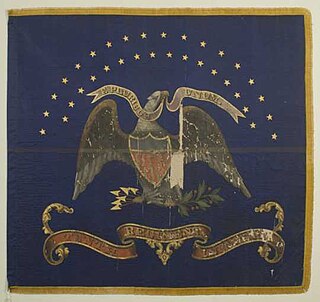
The 10th Minnesota Infantry Regiment was a Minnesota USV infantry regiment that served in the Union Army during the American Civil War.
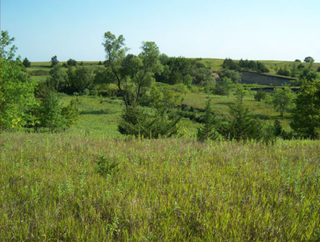
The Battle of Wood Lake occurred on September 23, 1862, and was the final battle in the Dakota War of 1862. The two-hour battle, which actually took place at nearby Lone Tree Lake, was a decisive victory for the U.S. forces led by Colonel Henry Hastings Sibley. With heavy casualties inflicted on the Dakota forces led by Chief Little Crow, the "hostile" Dakota warriors dispersed. Little Crow and 150 followers fled for the northern plains, while other Mdewakantons quietly joined the "friendly" Dakota camp started by the Sisseton and Wahpeton bands, which would soon become known as Camp Release.

The Dakota War of 1862, also known as the Sioux Uprising, the Dakota Uprising, the Sioux Outbreak of 1862, the Dakota Conflict, or Little Crow's War, was an armed conflict between the United States and several eastern bands of Dakota collectively known as the Santee Sioux. It began on August 18, 1862, when the Dakota, who were facing starvation and displacement, attacked white settlements at the Lower Sioux Agency along the Minnesota River valley in southwest Minnesota. The war lasted for five weeks and resulted in the deaths of hundreds of settlers and the displacement of thousands more. In the aftermath, the Dakota people were exiled from their homelands, forcibly sent to reservations in the Dakotas and Nebraska, and the State of Minnesota confiscated and sold all their remaining land in the state. The war also ended with the largest mass execution in United States history with the hanging of 38 Dakota men.
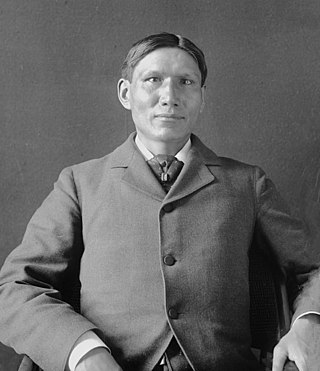
The Dakota are a Native American tribe and First Nations band government in North America. They compose two of the three main subcultures of the Sioux people, and are typically divided into the Eastern Dakota and the Western Dakota.
The 1st Dakota Cavalry was a Union battalion of two companies raised in the Dakota Territory during the American Civil War. They were deployed along the frontier, primarily to protect the settlers during the Dakota War of 1862.

The Battle of the Badlands was fought in Dakota Territory, in what is now western North Dakota, between the United States army led by General Alfred Sully and the Lakota, Yanktonai, and the Dakota Indian tribes. The battle was fought August 7–9, 1864 between what are now Medora and Sentinel Butte, North Dakota. It was an extension of the conflict begun in the Dakota War of 1862. Sully successfully marched through the badlands encountering only moderate resistance from the Sioux.
The Department of the Northwest was an U.S. Army Department created on September 6, 1862, to put down the Sioux uprising in Minnesota. Major General John Pope was made commander of the Department. At the end of the Civil War the Department was redesignated the Department of Dakota.
This timeline of South Dakota is a list of events in the history of South Dakota by year.














